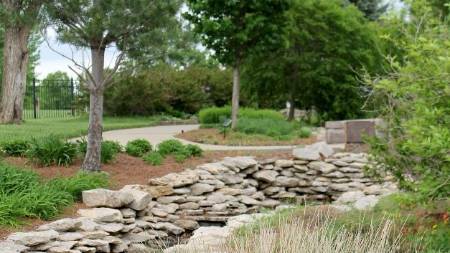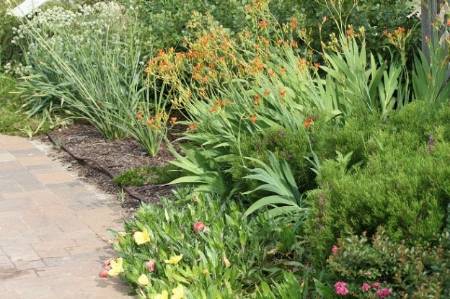Xeriscaping

With the hot and dry conditions in the area, there has been an increased interest in alternative lawn and landscaping practices both in and across the country. These collective practices are “xeriscaping,” coined by a group in Colorado to describe landscaping where water conservation is the primary focus. Whatever you choose to do on your lawn, make sure it follows all city codes and requirements.
Xeriscaping was coined from the Greek word “xeros,” meaning dry and scape, which means the pattern of landscape. A well-planned xeriscape will result in an attractive, sustainable landscape that conserves water and is based on sound horticultural principles. There are many ways to develop and create a water-wise landscape, from reducing the amount of lawn area to auditing your watering practices, using mulches to cover the ground and plants that tolerate heat and drought conditions. The first step to creating a water-wise lawn is to start with a plan that balances your aesthetic needs and your desire to conserve resources. Just a reminder, xeriscaping means reduced water usage, not zero maintenance.
One of the most significant aspects of xeriscaping is reducing the amount of irrigated turf in your yard through a couple of options. Xeriscaping doesn’t mean an absence of turf, just well-thought-out areas, such as removing hard-to-irrigate locations and tight corners that are hard to mow. The first option is to convert turf areas into alternatives requiring less water. Keep the lawn grass in functional areas, including spots with fair amounts of traffic or areas for pets and children to play. Transition steep slopes that are harder to water to groundcovers instead of turf. The second option is to transition the lawn to grass, such as buffalograss or bermudagrass, requiring less moisture than the traditional bluegrass or fescue yard. Turfgrass has its benefits in a water-wise landscape, including reducing run-off and environmental pollution while also moderating the temperature in the area. It’s also important to remember you don’t have to water the lawn unless necessary.
Auditing your watering practices can make a big difference in your water, as proper irrigation can reduce water usage by 30-80%. Consider transitioning to soaker hoses or drip irrigation in flower beds to only water the areas necessary rather than sprinklers. If you use a sprinkler system, ensure your system adequately covers the desired location and adjust if necessary. Change your irrigation system from watering everything to just watering in zones, as some areas of the yard won’t need as much water as others. Remember to water deeply and infrequently rather than shallowly watering; trees and shrubs should be watered to 12-18”, while lawns should be watered to a depth of 6-8” each time.
Cover as much of the ground as possible with mulch to reduce evaporation and keep the soil temperature cooler in any landscaping. If you need to improve your soil, consider using organic mulch such as bark chips or shredded mulch to add organic material. Rock and inorganic mulches will also work in most options. You will ultimately need to choose what works for you and is readily available.

Have questions? Contact our office where our Horticulture Extension Agent will assist you with questions.
Phone: (316) 321-9660
Email: callae@ksu.edu